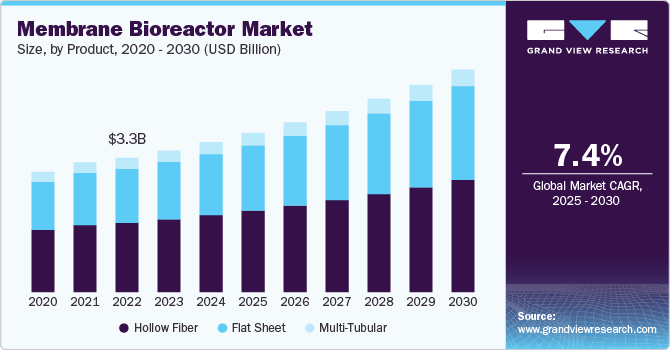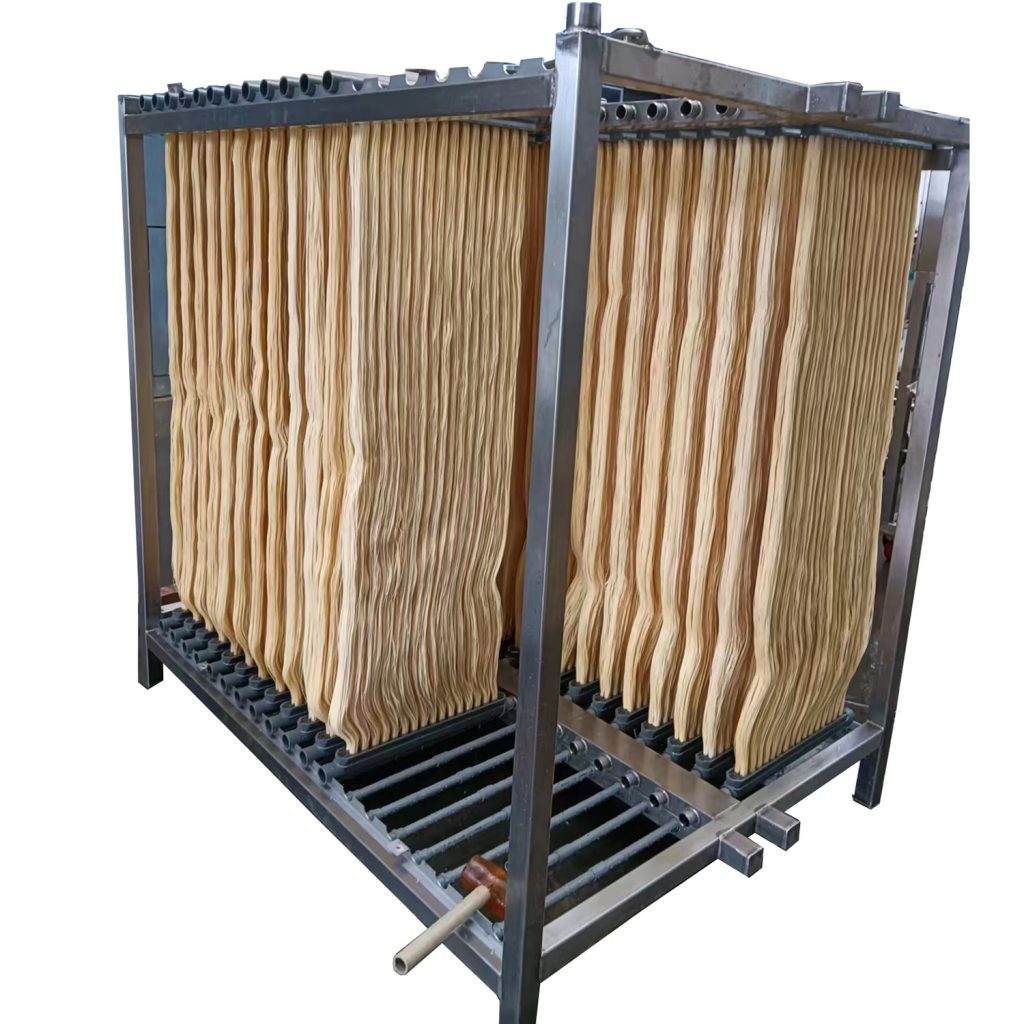The Advantages of Using a Membrane Bioreactor for Efficient Water Purification
The Advantages of Using a Membrane Bioreactor for Efficient Water Purification
Blog Article
Recognizing Membrane Layer Bioreactors: The Future of Wastewater Therapy
Membrane layer bioreactors (MBRs) stand for a noteworthy development in the area of wastewater therapy, integrating organic processes with innovative membrane layer filtering to boost effluent top quality. As global water deficiency and rigorous regulatory structures come to be significantly pushing problems, MBR technology provides a reliable response via its capacity to decrease footprint and enhance resource recovery.
What Are Membrane Bioreactors?

The core elements of MBR systems consist of a bioreactor where microbial task happens and a membrane layer device that filters the combined alcohol. This twin performance allows the simultaneous degradation of organic issue and solid-liquid separation in a solitary action. MBRs can operate in both submerged and exterior arrangements, with submerged systems being a lot more usual due to their compact layout and functional performance.
The fostering of MBR innovation has gotten traction in numerous applications, ranging from metropolitan wastewater treatment to commercial effluent administration. MBRs are particularly beneficial in circumstances where room is rigid or minimal effluent top quality criteria need to be satisfied. By preserving a high focus of microbes within the bioreactor, MBRs boost the deterioration of natural pollutants, consequently producing higher treatment effectiveness contrasted to traditional methods.
Secret Benefits of MBR Innovation
The integration of biological treatment with membrane layer purification in MBR systems offers numerous advantages that set it in addition to typical wastewater therapy methods. Among the main benefits is the improved effluent high quality. MBRs successfully eliminate suspended virus and solids, attaining higher levels of filtration that satisfy strict discharge standards and promote water reuse applications.

One more substantial benefit is the lowered sludge manufacturing. MBR systems generate much less excess sludge, leading to lower disposal costs and a decrease in environmental impact. The closed nature of the membrane system minimizes the risk of smell exhausts and boosts total procedure control.
Last But Not Least, MBRs are versatile and flexible, making them appropriate for different wastewater types, including commercial and metropolitan resources. The capability to integrate with advanced treatment modern technologies better boosts their performance, making MBRs an appealing service for the future of wastewater management.
Challenges and Limitations of MBRs
While MBR modern technology supplies many advantages, it also encounters a number of difficulties and limitations that can influence its extensive adoption. One substantial difficulty is the high capital and functional expenses related to MBR systems. The first investment for membrane layer materials and the necessary framework can be considerable, making it much less easily accessible for smaller sectors or towns.
Additionally, membrane fouling remains an essential problem that can lessen system performance and rise maintenance needs. Fouling occurs when solids, raw material, or microorganisms gather on the membrane surface, leading to decreased leaks in the structure and requiring regular cleansing or replacement.
One more constraint involves the intricacy of the modern technology. MBR systems require proficient personnel for operation and upkeep, which can be an obstacle in areas with limited technical expertise. The disposal of invested membrane layers offers ecological concerns, as the materials are frequently not naturally degradable and can add to lose monitoring obstacles.
Last But Not Least, while MBRs can effectively deal with a large range of wastewater, they may not be suitable for all applications, particularly those with high concentrations of you could try these out fats, oils, and greases, necessitating further study and technology to address these limitations.
Applications of Membrane Layer Bioreactors
In numerous fields, membrane layer bioreactors (MBRs) have actually emerged as a versatile service for wastewater treatment (Membrane Bioreactor). Their applications extend metropolitan, commercial, and farming settings, showcasing their adaptability and effectiveness in varied settings. In local wastewater treatment plants, MBRs considerably enhance effluent quality, permitting water reuse and lowering the ecological effect of discharged wastewater
Industrially, MBRs are used in food and beverage handling, fabric manufacturing, and pharmaceutical manufacturing, where they successfully treat high-strength waste streams. Their capacity to manage varying and fluctuating lots pollutant focus makes them especially valuable in these fields. Furthermore, MBRs facilitate the elimination of pathogens, put on hold solids, and organic matter, adding to compliance with rigorous discharge guidelines.
In farming, MBRs are progressively used for dealing with farming overflow and animals wastewater, enabling the recuperation of nutrients for fertilizer production. They additionally aid in the treatment of greywater for watering, promoting sustainable water monitoring practices.
The adaptability of MBRs is further confirmed by their assimilation with various other innovations, such as anaerobic food digestion and progressed oxidation processes, improving total efficiency and resource healing in wastewater therapy systems.
The Future of Wastewater Therapy
Advancements in innovation and an expanding focus on sustainability are forming the future of wastewater treatment. Membrane bioreactors (MBRs) exemplify this shift by incorporating organic therapy procedures with membrane filtration, leading to top notch effluent ideal for reuse. The trend towards circular economic climates is triggering centers to take on MBRs for their capacity to recoup sources, such as water and nutrients, from wastewater.
Innovations in membrane materials and configuration are enhancing the efficiency and longevity of MBR systems, reducing operational costs and energy intake. Smart modern technology assimilation, consisting of real-time surveillance and automated control systems, is more maximizing efficiency and allowing predictive maintenance, thus minimizing downtime.
Moreover, governing stress and social expectations are pushing sectors and communities to embrace more sustainable techniques. Membrane resource Bioreactor. The shift towards decentralized wastewater therapy options is acquiring traction, enabling localized treatment that lowers transportation costs and power use
Conclusion
Membrane layer bioreactors (MBRs) represent a transformative approach to wastewater therapy, integrating organic processes with advanced membrane layer technology. The benefits of MBRs, including boosted effluent get redirected here high quality, lowered spatial needs, and lower sludge manufacturing, position them as a sensible service amid growing urbanization and more stringent environmental laws. In spite of existing obstacles, the continued technology in membrane layer materials and functional techniques assures to bolster the efficiency and adoption of MBRs, ensuring their crucial role in the future of lasting wastewater monitoring.
Membrane bioreactors (MBRs) stand for a significant development in the area of wastewater therapy, integrating biological procedures with innovative membrane filtering to boost effluent quality.Membrane bioreactors (MBRs) integrate organic therapy processes with membrane filtering to properly deal with wastewater.The integration of biological treatment with membrane layer purification in MBR systems offers various advantages that establish it apart from typical wastewater therapy approaches. Membrane bioreactors (MBRs) exemplify this shift by integrating biological treatment processes with membrane filtering, resulting in top notch effluent ideal for reuse.Membrane layer bioreactors (MBRs) stand for a transformative strategy to wastewater therapy, incorporating organic procedures with innovative membrane layer modern technology.
Report this page